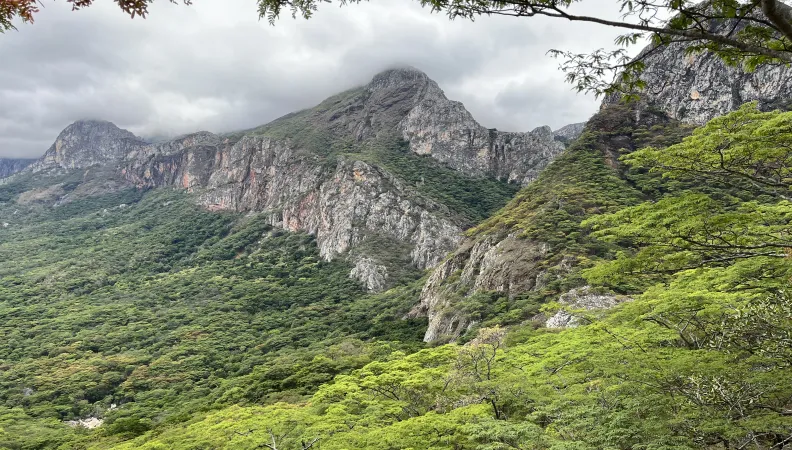Share the page
The Chimanimani conservation area: moving towards a sustainable management model
Published on

To mark the International Day for Biological Diversity, we provide an update on the Chimanimani project. This project has been supported by the FFEM and AFD for the past 4 years to work on sustainable management combining the conservation of natural and cultural resources with the socio-economic development of the region.
The Chimanimani conservation area is a cross-border protected area covering approximately 1,000 km² in eastern Mozambique, in the mountainous region bordering Zimbabwe. This area has particular importance in terms of regional stability, cultural wealth and tourism potential. It is also notable for its diversity of habitats and species, which adds considerable historical and cultural value. This conservation area includes Chimanimani National Park, a reserve renowned for plant biodiversity and home to over 2,182 plant species – more than 30% of the country's total estimated plant diversity – and is surrounded by a heavily forested buffer zone. However, it is facing numerous challenges, including poaching, gold mining, logging and other illegal human activities. These practices are harmful to biodiversity and threaten the ecological balance of the region.
To address these challenges, the Chimanimani project is seeking to ensure that biodiversity is preserved, while also harnessing the natural and cultural resources and supporting the socio-economic development of local communities. It focuses on the areas with the richest biodiversity, those which have seen the highest rates of deforestation and biodiversity loss over recent years, and those where the need for sources of livelihoods and conservation of biodiversity are the greatest.
The project is being run by the BIOFUND and MICAIA foundations, the National Administration for Conservation Areas (ANAC) and Chimanimani National Park, with €4.2 million of support from the French Facility for Global Environment (FFEM) and the French Development Agency (AFD).
The Chimanimani project has four components: expanding understanding and protection of natural and cultural resources in the conservation area; strengthening the land rights of local communities; professionalising the honey industry and developing two other industries based on biodiversity products; and securing sustainable financing for the conservation area through a payment scheme for ecosystem services and a pilot site for biodiversity offsetting.
The project has already made significant progress. As a step towards professionalising the honey industry, 81 bee-keeping “leaders” have received training and 405 hives. This initiative is increasing the capacity of communities to harness the region's natural resources sustainably. At the same time, 4 honey processing plants are currently under construction in the communities of Macoca, Zomba, Gotogoto and Tsetsera. These plants play a key role in processing and marketing products from the hive, creating economic opportunities for local communities.
The project has also identified some new value chains. These include mushrooms, essential oil and tea made from the Lippia Javanica tree and conserves made from sugar plum and mobola plum. These developing industries are providing additional economic outlets and encouraging diversification of economic activities in the region.
By identifying new economic opportunities, the project is helping to improve living conditions for the inhabitants while also preserving the ecosystems unique to the region. Milagre Nuvunga, co-founder of the MICAIA Foundation, testifies to the impact of this innovative project:
By developing long-term partnerships to manage the conservation area, the project is also helping to strengthen environmental civil society organisations in Mozambique. The honey industry developed in Chimanimani is one of the few in Africa to generate significant income for local communities, demonstrating the importance of harnessing local biodiversity in the socio-economic development of these communities.
Milagre adds
The Chimanimani project is an example of best practice in sustainable management of a conservation area and of biodiversity, as well as in drawing up plans for sustainable development of land.
states Xavier Debade, FFEM project manager - forest and ecosystem restoration.
The integrated and innovative approach taken by this project, which is safeguarding the land rights of local communities and generating income for them through sustainable harvesting of local natural products, could be successfully replicated across other protected areas in the country. By promoting adoption of this replicable approach and capitalising on the promising outcomes achieved, the FFEM hopes to inspire similar initiatives throughout the world, supporting both biodiversity protection and the socio-economic development of local communities.
